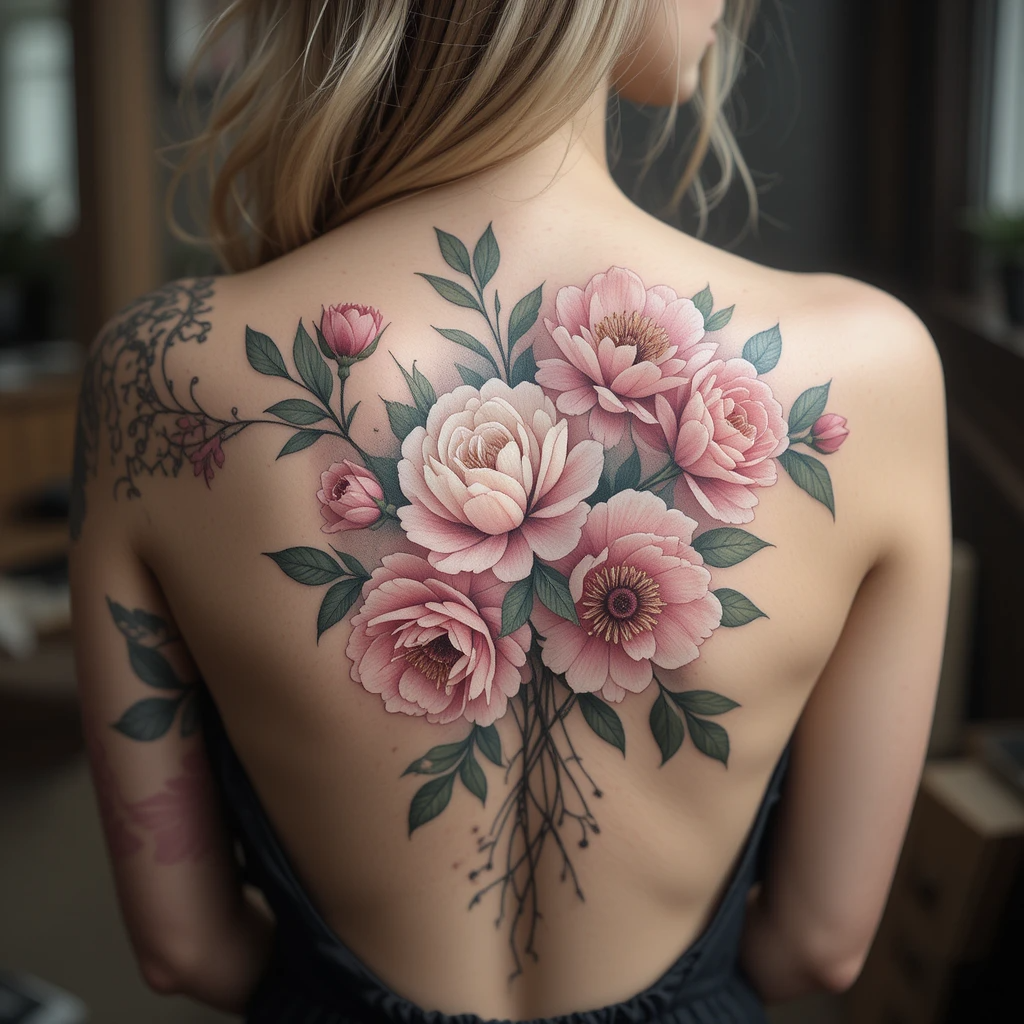The world of tattoo artistry has witnessed a remarkable renaissance in botanical floral designs, particularly on the back canvas. These intricate, nature-inspired pieces represent the perfect marriage of classical beauty and contemporary tattoo techniques, creating some of the most breathtaking body art being produced today. From delicate peonies to lush garden compositions, floral back tattoos have become the epitome of sophisticated feminine expression.
The Artistry Behind Botanical Realism
Modern botanical tattoo artists have elevated floral work to unprecedented levels of realism and detail. These aren’t simple outline flowers – they’re complex, multi-dimensional compositions that capture the subtle gradations of color, the delicate texture of petals, and the organic flow of natural growth patterns. The level of skill required to achieve this botanical realism represents years of artistic development and technical mastery.
The soft, muted color palettes commonly used in these pieces – featuring dusty roses, sage greens, and warm lavenders – create an ethereal quality that seems to make the flowers bloom directly from the skin. This approach to color work requires an understanding of how pigments age and settle in the skin, ensuring that the subtle gradations remain beautiful for years to come.
The Back as the Ultimate Canvas
The back offers the ideal surface for large-scale botanical compositions. The broad, relatively flat expanse allows artists to create flowing, natural arrangements that follow the body’s contours while maintaining the organic growth patterns found in real botanical specimens. The placement between the shoulder blades, extending down the spine, creates a dramatic focal point that can be both revealed and concealed as desired.
Upper back placements work particularly well for floral designs because they complement the natural lines of the shoulders and neck. The way these tattoos frame the décolletage area creates an elegant, feminine silhouette that enhances rather than competes with the body’s natural beauty.
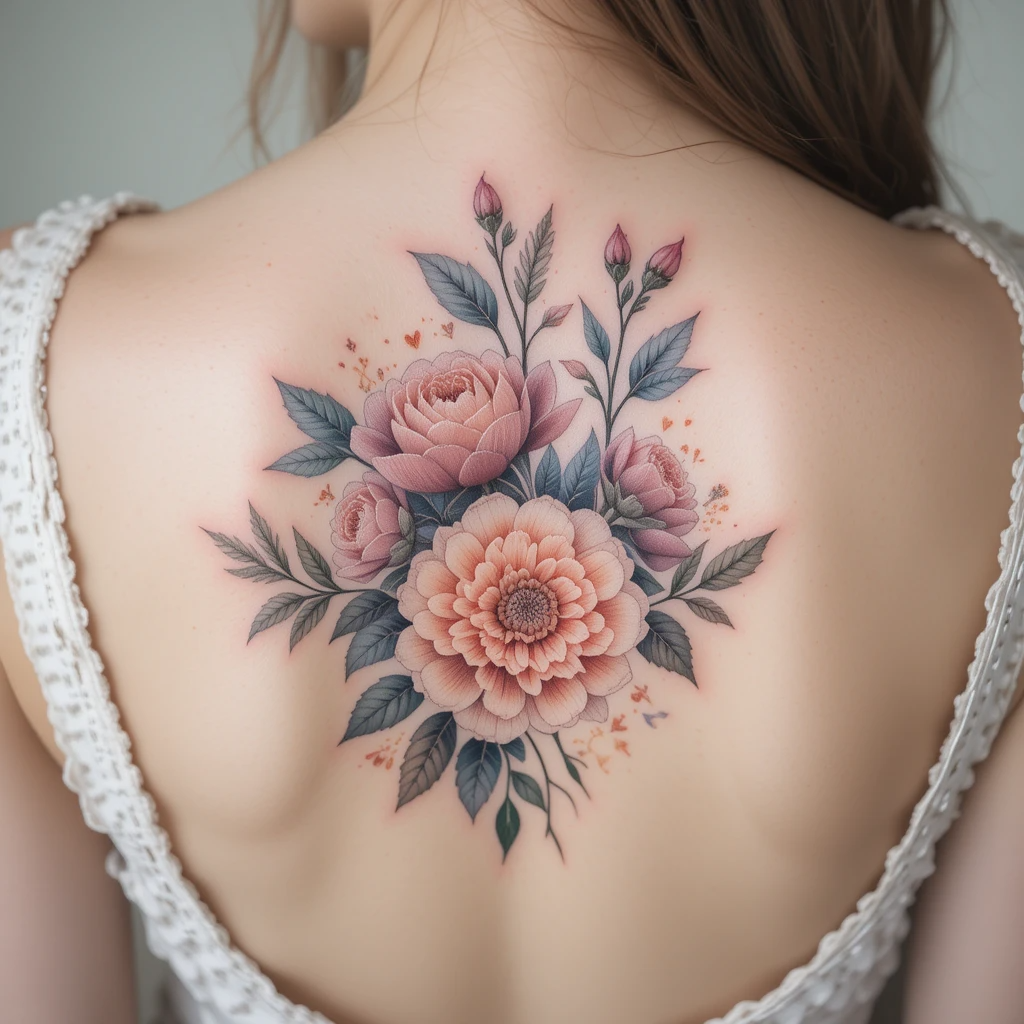
Popular Botanical Elements and Their Meanings
Peonies: Often called the “king of flowers,” peonies symbolize honor, wealth, and feminine beauty. Their full, layered petals make them ideal for showcasing an artist’s skill with realistic shading and dimension.
Roses: The classic choice for floral tattoos, roses can represent love, passion, or new beginnings depending on their color and presentation. The complexity of rose petals offers endless opportunities for artistic interpretation.
Wildflower Mixtures: Combining various smaller blooms like daisies, baby’s breath, and delicate buds creates texture and visual interest while maintaining a natural, garden-fresh appearance.
Foliage and Stems: The supporting elements – leaves, branches, and thorns – are crucial to creating believable botanical compositions. These details require just as much skill and attention as the flowers themselves.
Color Theory in Floral Tattoo Design
The success of botanical floral tattoos lies heavily in sophisticated color work. Artists must understand not only how colors interact with each other but also how they’ll appear and age on different skin tones. The subtle variations between similar hues – the difference between a dusty rose and a coral pink, for example – can make or break the realism of the piece.
Many contemporary floral tattoos employ a technique called “color dropping,” where saturated colors gradually fade into the skin tone, creating the illusion that the flowers are emerging from or sinking into the flesh. This technique requires exceptional skill in color blending and an understanding of how different pigments behave over time.
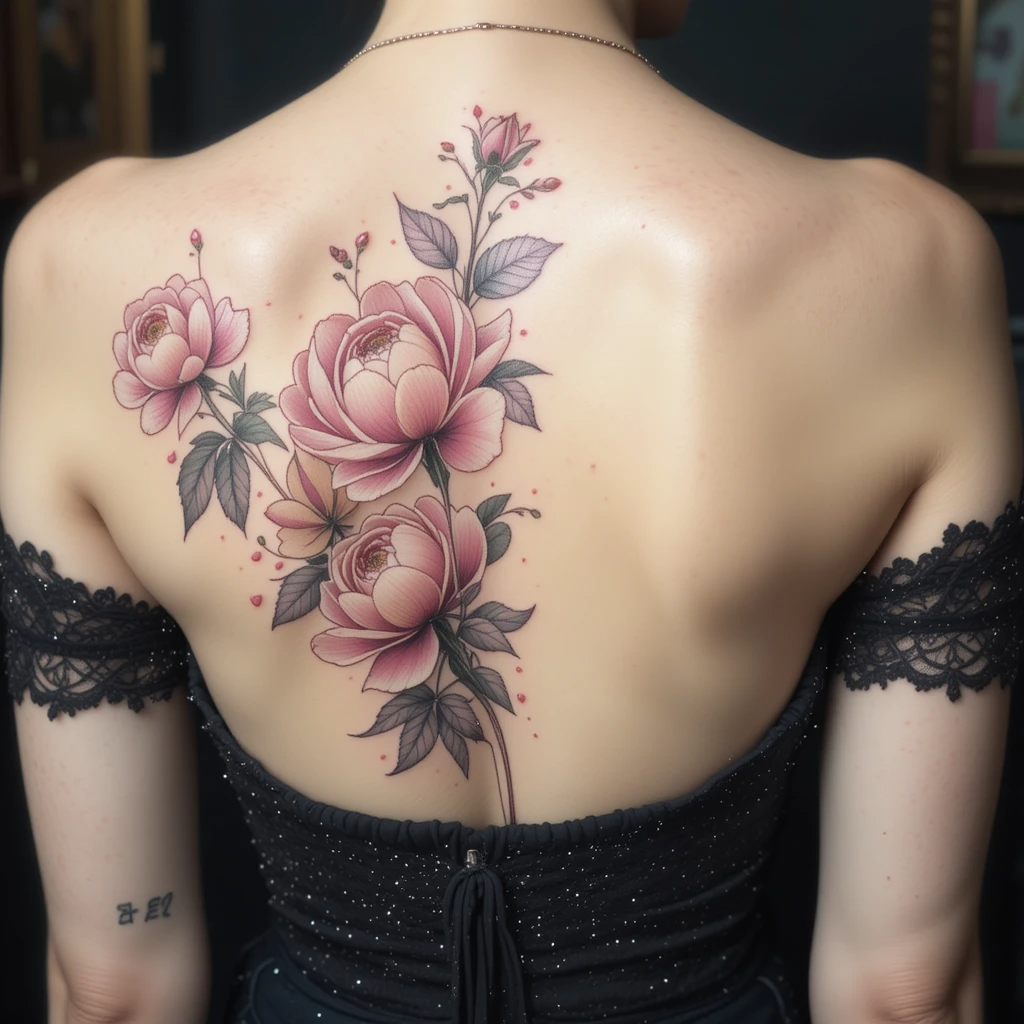
The Feminine Renaissance in Tattoo Culture
Floral back tattoos represent a significant shift in how feminine tattoo design is approached and perceived. These pieces celebrate femininity without relying on tired stereotypes or overly sexualized imagery. Instead, they draw power from natural beauty, creating art that is both sensual and sophisticated.
This movement toward botanical realism has coincided with a broader acceptance of tattoos in professional and social settings. The refined, artistic nature of these pieces makes them suitable for individuals who want meaningful body art that doesn’t compromise their professional image.
Planning Your Botanical Masterpiece
Creating a large floral back piece requires careful planning and collaboration between artist and client. The design process typically begins with selecting the primary flower varieties and determining the overall composition flow. Considerations include:
- How the design will work with your body’s natural contours
- The scale relationship between different floral elements
- Color harmony and how it complements your skin tone
- Integration with any existing tattoos
- Future expansion possibilities
Most botanical back pieces are completed over multiple sessions, allowing for proper healing between detailed work and giving both artist and client time to perfect each element.
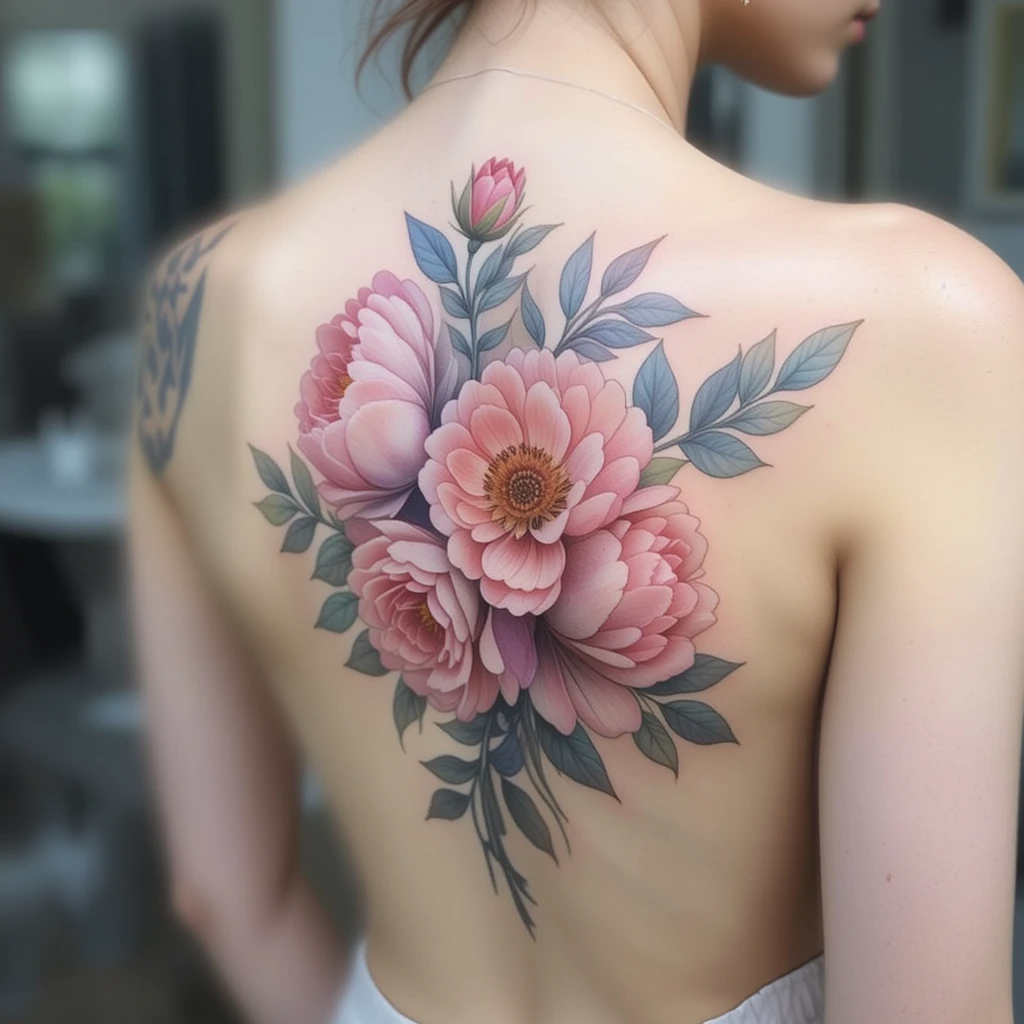
The Technical Challenges
Botanical tattoos present unique technical challenges that require specialized skills. The realistic rendering of organic forms demands a deep understanding of light, shadow, and form. Artists must be able to create the illusion of depth and dimension while working within the limitations of tattoo pigments and skin as a canvas.
The layering techniques used in botanical work – building up colors gradually to achieve realistic depth – require patience and precision. Each petal, each leaf vein, each subtle shadow must be carefully considered and executed to maintain the overall illusion of botanical realism.
Aftercare for Detailed Color Work
Large, detailed floral tattoos require meticulous aftercare to preserve the intricate color work and fine details. The healing process for these pieces can be more complex than simpler tattoos due to the layered color application and detailed line work.
Following proper aftercare protocols is essential for maintaining the vibrancy of the colors and ensuring that the fine details heal properly. This includes protecting the tattoo from sun exposure during healing and using appropriate moisturizing products to support the skin’s recovery.
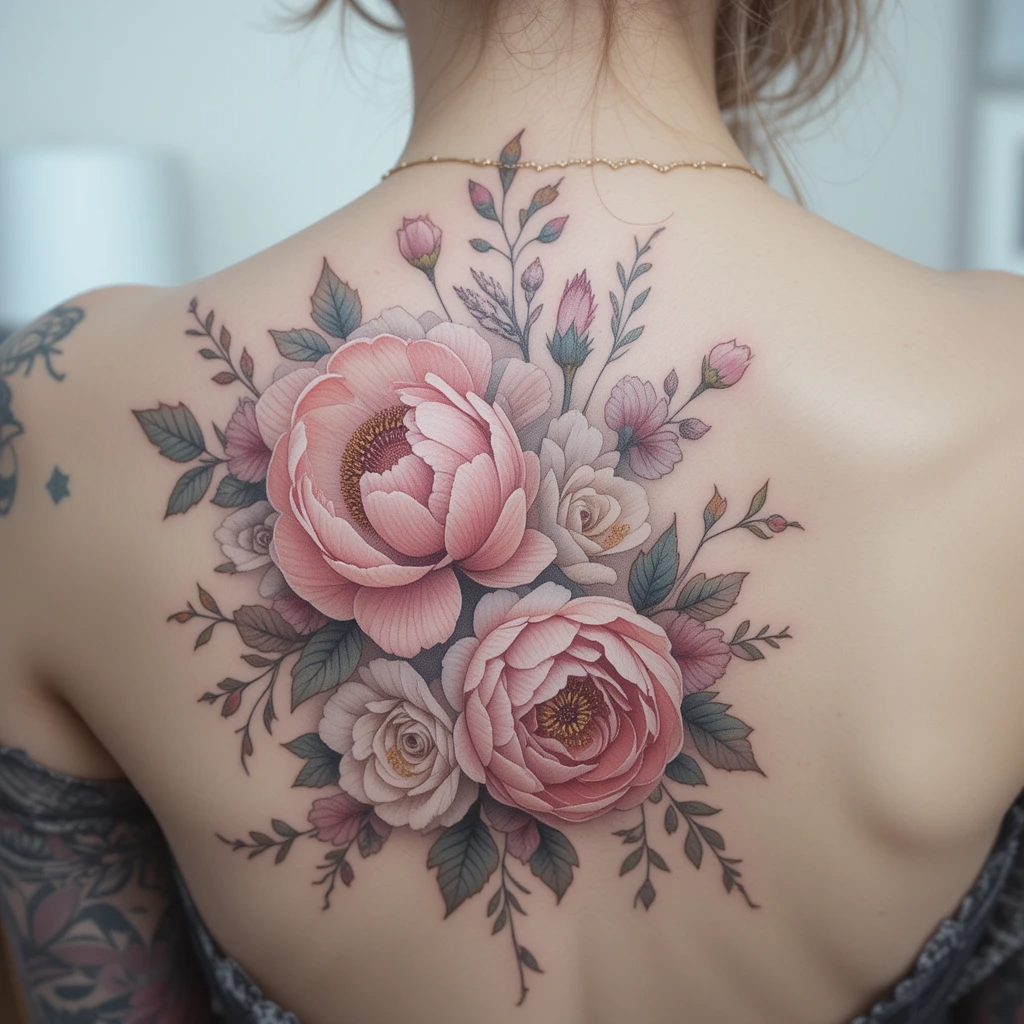
Cultural and Symbolic Significance
Throughout history, flowers have carried deep cultural and personal significance. Many clients choose specific floral elements for their symbolic meaning – whether it’s incorporating their birth flower, honoring a loved one, or representing a significant life transition. The tattoo becomes not just beautiful art but a personal narrative told through botanical symbolism.
Choosing the Right Artist
Not every tattoo artist can execute high-quality botanical work. This specialized style requires specific skills and experience. When searching for an artist, look for:
- A portfolio demonstrating realistic color work and botanical accuracy
- Experience with large-scale back pieces
- Understanding of color theory and aging
- Attention to botanical detail and natural growth patterns
- Ability to create custom compositions rather than copying existing designs
The Future of Botanical Tattoo Art
As tattoo techniques continue to evolve, we’re seeing even more sophisticated approaches to botanical realism. Some artists are experimenting with hyperrealistic techniques that push the boundaries of what’s possible with tattoo pigments. Others are incorporating elements like UV-reactive inks for subtle effects that only appear under certain lighting conditions.
The integration of digital design tools allows for more precise planning and color matching, while new pigment formulations offer greater color stability and vibrancy over time.

Making the Investment
A high-quality botanical back piece represents a significant investment of both time and money. These pieces often require 20-40 hours of work spread across multiple sessions. However, for those who appreciate the artistry and personal significance of botanical tattoos, the result is a lifetime of wearable art that celebrates both natural beauty and personal expression.
The transformation that occurs during the creation of a large botanical piece often becomes as meaningful as the finished tattoo itself. Many clients describe the process as meditative and transformative, marking important chapters in their personal journey.
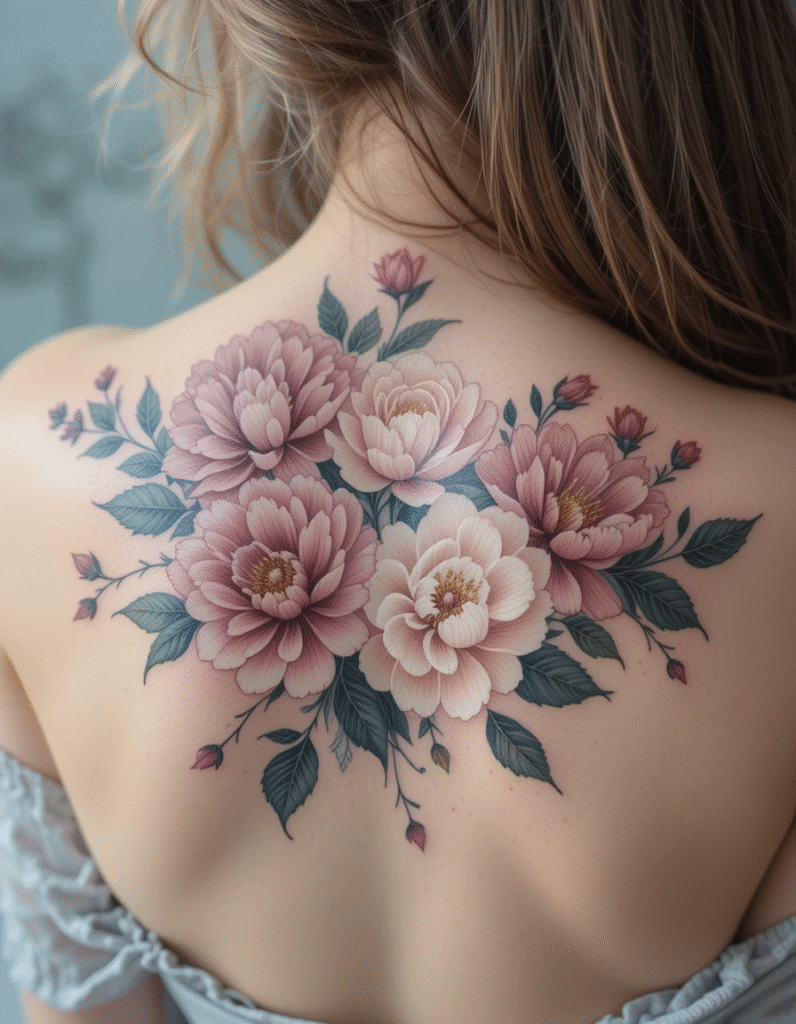
Embracing Natural Beauty
Botanical floral back tattoos represent more than just a trend – they’re a celebration of natural beauty, artistic skill, and personal expression. These pieces honor the timeless appeal of flowers while showcasing the cutting-edge capabilities of modern tattoo artistry.
For those drawn to the delicate beauty of botanical art, these tattoos offer a way to carry that beauty permanently, creating a personal garden that blooms eternal on the canvas of the skin.
Ready to explore botanical tattoo artistry? Research artists specializing in realistic floral work and begin planning your own botanical masterpiece.

